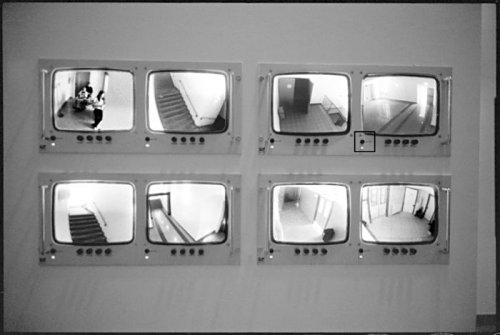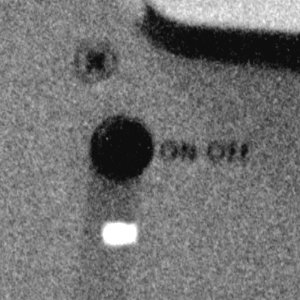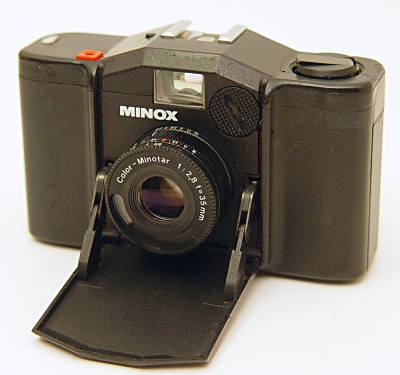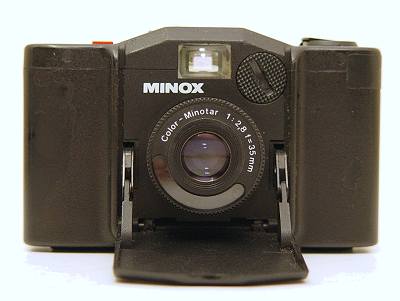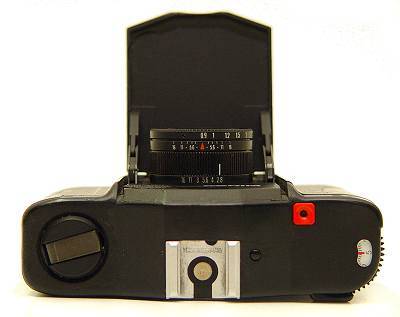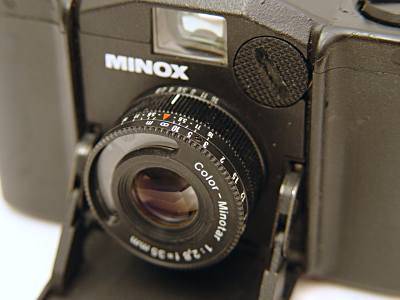|
Additionally I use a Minox 35 EL. This very compact cameras has a 35mm f/2.8 lens of striking quality. The body is as small as a pack of cigarettes and it is very light. A disadvantage surely is, that there is no focusing system. You have to guess the object distance, which at f/2.8 makes it a rather difficult task to get images as sharp as the lens would allow for. Another known problem is that there is no reliable low-battery warning. The camera has a built in battery tester, which however yields wrong results. Even with almost empty batteries the tester pretends that there is enough power. The exposure meter does indeed work correctly at low battery power, but since the shutter is electromagnetic it fails before the power meter warns you. If the batteries are not full, you will end up with images underexposed by about 2 to 3 stops in normal light situations. Despite of these minor difficulties, photographing with a working Minox is a pleasure and produces images of high quality. The 35 EL model, released in 1974, is the first of a series, which is still continued today. Later models have more or improved features such as exposure correction (x2), self-timer, improved film transport mechanics etc. These images may demonstrate the quality of the Minotar lens. The upper image is a full-frame scan of an image taken with the Minox 35 EL. It was taken freehand at about f/4. The lower image shows a higher-resolution scan of the boxed area. This image shows a negative area of about 1.2 x 1.2 mm. The width of the letters is about 1/100 of the image width, i.e. about 0.012 mm. From the distance between the letters the line pair density can be estimated, which yields a value of about 40 LP/mm. Note that this estimate is is a lower limit of the true resolution of the Minotar, since the image was taken freehand, the object distance was guessed and the position of the analyzed detail is not in the lens centre. The result shows that the Minotar is an excellent lens even compared to the best optics produced today.
For further information have a look at the "Minography" pages of Michael Eichberger summarizing all the advantages of using this camera in every-day life. |
|
